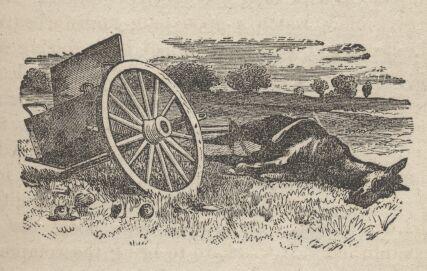Today the site of Miller’s or Reed’s Station is on private land ~8 miles from Dayton down the Old River Road. Nothing remains because the lumber in the building was used elsewhere. It was originally one of the 20 or so stations along the Carson River branch of the California Emigrant Trail in 1849 and 1850. It became a relay station when the Pony Express started in 1860. It became known as Reed’s Station when G.W. Reed purchased it on July 1, 1861.
(Expedition Utah)
Sources generally agree on the identity of this station as a C.O.C. & P.P. Express Co. station, possibly located near the area where the north and south branches of the original Pony Express and Overland Mail Company trails rejoined. Bloss lists Miller's and Reed's as separate stations, but other sources agree that the two names represent the same station. The station began about 1849 or 1850 as a stopping point on the California Emigrant Trail, and the Pony Express included the site as one of its original relay stations in 1860. On July 1, 1861, the station passed into the hands of G. W. Reed. Even though Reed owned the station after that date, some people knew it as Miller's Station. On October 19, 1860, Richard Burton stopped at "Miller's Station" for about one and one-half hours, where he and his companions had a snack and waited for a heavy rain shower to end. A letter written by an employee, C.H. Ruffing, on May 31, 1860, from Miller's Station to W.W. Finney stated:
I have just returned from Cold Springs-was driven out by the Indians, who attacked us night before last. The men at Dry Creek Station have been killed and it is thought the Roberts Creek Station has been destroyed. The Express turned back after hearing the news from Dry Creek. Eight animals were stolen from Cold Springs on Monday. Hamilton is at the Sink of the Carson, on his way in with all the men and horses. He will get to Buckland tomorrow.
Nothing remains of the station's structures, but a well still exists on the site.
The dull morning had threatened snow, and shortly after noon the west wind brought up cold heavy showers, which continued with intervals to the end of the stage. Our next station was Miller's, distant 15 to 16 miles. The road ran along the valley of Carson River, whose trees were a repose to our eyes, and we congratulated ourselves when we looked down the stiff clay banks, 30 feet high, and wholly unfenced, that our journey was by day. The desert was now done. At every few miles was a drinking calaboose: where sheds were not a kettle hung under a tree, and women peeped out of the log huts. They were probably not charming, but, next to a sea voyage, a desert march is the finest cosmetic ever invented. We looked upon each as if
"Her face was like the Milky Way in the sky,
A meeting of gentle lights without a name."
At Miller's Station, which we reached at 2 30 PM, there really was one pretty girl - which, according to the author of the Art of Pluck, induces proclivity to temulency. While the rain was heavy we sat round the hot stove, eating bread and cheese, sausages and anchovies, which Rabelais, not to speak of other honest drinkers, enumerates among provocatives to thirst. When we started at 4 PM through the cold rain, along the bad road up the river bed, to liquor up was manifestly a duty we owed to ourselves. And finally, when my impatient companions betted a supper that we should reach Carson City before 9 PM, and sealed it with a smile, I knew that the only way to win was to ply Mr Kennedy the driver with as many pocula as possible.
(The City of the Saints, p 495)
